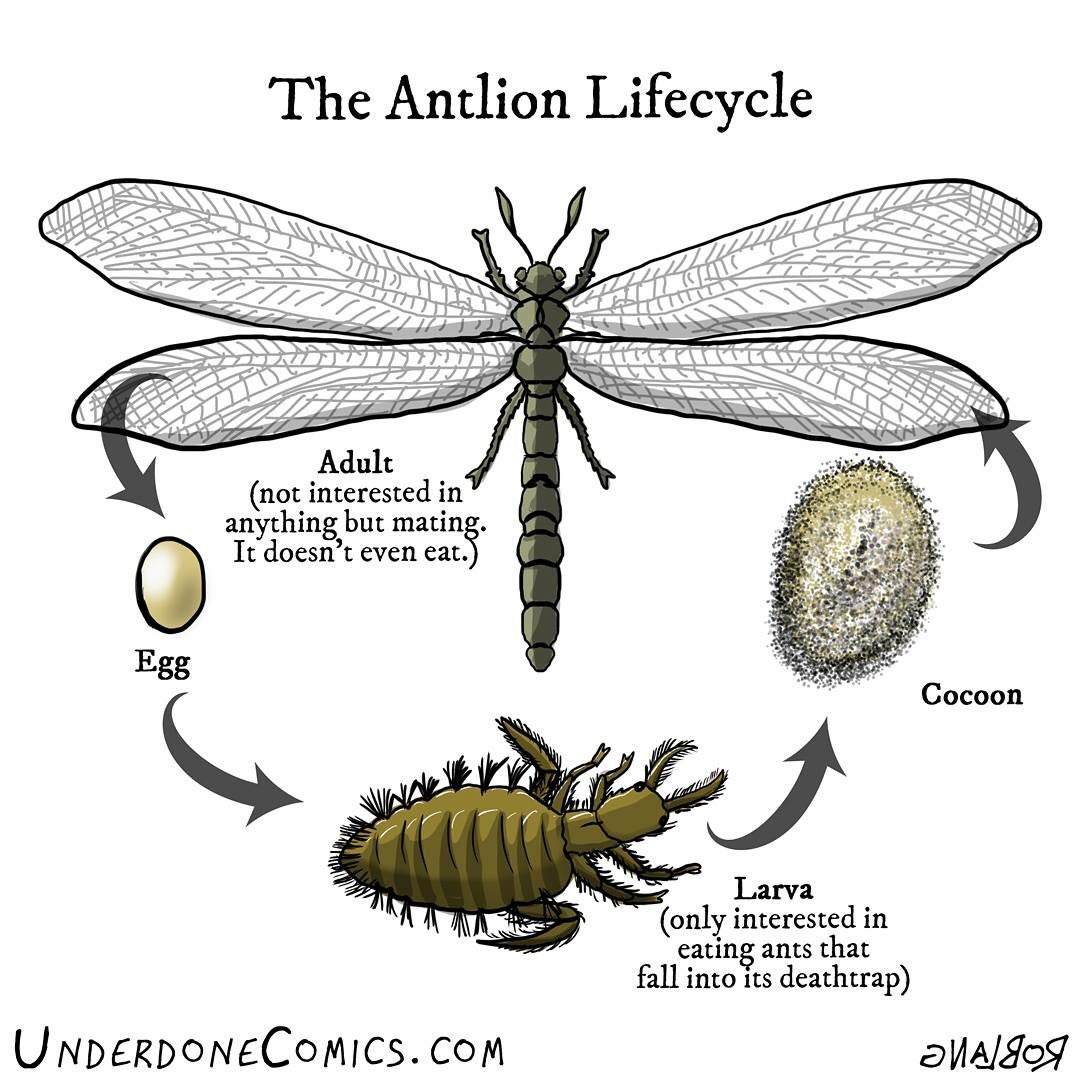
~ ~ ~ ~ ~
Based on the information in Antlions in the Classroom, we went off with a trowel and an old seive to collect our lion.
The PDF suggested scooping up an entire pit and then sifting it through a seive. We had a hard time with this because there were a lot of rocks under the overhang where the pits were located. It worked much better to put the scoop of sandy rocky soil onto a flat mesh surface and move the rocks around with our fingertips. I would suggest an old window screen. The antlion was the size of a pillbug and the color of sand. It was perfectly camouflaged, so be prepared to look carefully. If you have a Loupe on a Lanyard from the Private Eye, have it handy.
We dug up four pits before we found an antlion. It may have been that we missed some because we didn't yet know what we were looking for, or it could have been that those other pits truly were empty because the adult flew away. The children were excitedly looking for ants to place on the edge of a pit in order to test for life, when we dug up one that had an antlion in it.
Your habitat container needs to have a diameter of at least four inches so that the antlion can form its pit correctly. It does not need a lid since the larva will not try to escape. We used a large Pyrex food storage container.
The PDF also suggested purchasing colored craft sand and pouring the sand into the habitat in layers so that you can see the construction of the pit more clearly. This didn't work so well. The craft sand is extremely fine and the antlion wasn't able to create a cone that looked like the ones we find in nature. When I do this again, I will use desert sand. If desired, you could simply sprinkle a thin layer of white craft sand on top so that you can see that the sand below is thrown up and out of the pit as the antlion forms it.

The antlion walked backwards off the mesh, fell onto the sand, and instantly dug itself in and disappeared.
The next morning we came in and found a pit. As I say, the pit didn't look quite right (usually they have a steeper slope and a sharper point at the bottom) and I believe the pit shouldn't have taken so long to be built. So I think it struggled. Next time a different sand!
The silver sand layer was underneath the white layer. You can see that the antlion digs its pit by throwing the sand at the bottom up and out until it has formed the shape it wants. It will also throw up sand to create a mini avalanche and drag down an ant that is trying to climb back up and escape.
It is really fun to pretend to be ants in an antlion pit and climb up a playground slide.
I noticed that the pit never got to either of the deeper layers of sand. I would estimate the pit is about an inch deep and an inch in diameter. So two colors of sand will be definitely enough to show how it constructs its pit.
To introduce this activity you have a few options. The very best thing would be if you could read the "The Lion Hunt" chapter, pages 187-194, in The Burgess Book of Nature Lore: Adventures of Tommy, Sue and Sammy with Their Friends of Meadow, Pool, and Forest by Thornton W. Burgess.

This is a vintage book (now sadly out of print... maybe I should suggest it to Purple House Press) so if you can't track it down, another great option would be Monkey Puzzle by Julia Donaldson.

This post contains affiliate links to materials I truly use for homeschooling. Qualifying purchases provide me with revenue. Thank you for your support!










 Immersive Experience
Immersive Experience Immersive Experience
Immersive Experience







No comments:
Post a Comment